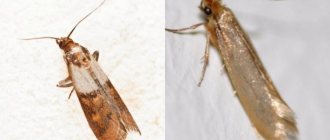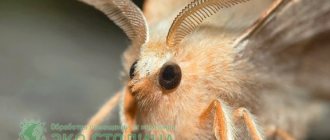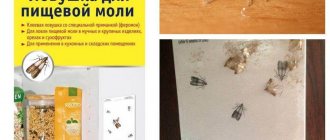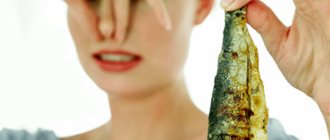Poplar moth (Lithocolletis populifoliella) is one of the varieties of nocturnal winged pests. Thanks to the bright pattern on its gray velvety wings, it is called the Pied. The period of distribution of the small insect occurs during the flowering of the poplar. Moths breed in the fluff and along with it end up on balconies, houses and apartments.
Moths do not damage clothes like other representatives of the species. It selects household appliances indoors, penetrates them and lays eggs, causing the devices to malfunction. Since there are few effective means to eliminate parasites, preventive methods are used.
Appearance of poplar moth.
Where does the poplar moth live?
There are many nocturnal inhabitants found in nature. This variety is most common in the Caucasus, in Central Asian countries (Kazakhstan, Uzbekistan, Kyrgyzstan, Turkmenistan, Tajikistan) and in European Russia.
The parasite prefers regions where balsam, pyramidal, sweet-scented and laurel-leaved poplar grow, and avoids areas with black and Canadian poplars. Leaves wild forests unattended.
On the South American continent there is a large subspecies with a wingspan of 7 cm and above.
Habitat of the poplar moth.
Thanks to their coloring, insects are invisible during the daytime. In the evening, they gather in the light of lanterns, cover the ceiling, fly into open windows, into entrances, and land on people.
Unwanted guests do not allow the home to be ventilated. Colonies of the moth quickly fill electrical appliances, chandeliers and lampshades.
White fluff is a favorable environment for the parasite to reproduce. The summer heat protects against the growth of pest numbers. Cool summers and warm winters, on the contrary, contribute to an increase in the population and lead to sharp surges in numbers and invasions.
Habitat, lifestyle and nutrition
In nature, the moth lives in those areas where balsam, fragrant, pyramidal poplars grow:
- in the European part of Russia;
- on the territory of the Caucasus;
- in the Central Asian region.
Adults do not feed. They live off what they have stored while in the caterpillar stage. But the larvae are distinguished by their extraordinary gluttony. They eat young leaves:
- drain;
- pears;
- apple trees;
- poplars and other trees.
Just one larva can gnaw a hole with a diameter of about 2 cm in a leaf. If there are many pests, the trees may be left without foliage as early as July-August.
Pest
Penetrating into a person’s home, butterflies settle in chandeliers, lampshades, electrical appliances, containers with bulk products, and dried fruits. They also love various secluded places - behind furniture, radiators, etc.
What does it look like
The name “poplar moth” is considered conditional. Entomologists classify the insect as a subspecies of the Butterfly family. Because of the characteristic marks that the small pest leaves on the foliage, it is called a leaf miner.
Moths are distinguished by narrow, blade-shaped wings edged with fringe. The front pair is brown with small white and brown contrasting inclusions, the back pair is shorter, steel color. The wingspan of an adult insect (imago) is 6-10 mm, the average length is 5-8 mm. Such colors and sizes make the moth invisible against the background of trees.
Cocoons hide in cracks and crevices of houses, bark, hollows, fall into the ground with fallen leaves and continue to live after wintering. At the end of spring, harmful insects fly out and actively mate.
Photo of an adult moth.
Description
Poplar moth (moth) is a nocturnal pest that appears during the active flowering of poplar. It is a small winged insect belonging to a subspecies of butterflies; it can easily enter the house through absolutely any crack or opening.
It is as light as poplar fluff, and with it it can travel long distances.
The poplar moth looks like a small moth. How to recognize it? You need to take a close look at her front wings. They have a clearly visible variegated speckled pattern and a velvety edging – this is the distinguishing feature of the insect. The hind wings of the pest are characterized by a calm steel color. This unusual color allows the poplar moth to be invisible to its enemies.
The wings of an adult reach a length of 7 to 8 mm, with a wingspan of 11 mm. The poplar moth reproduces by laying larvae, which are characterized by a bright yellow color, but gradually, as the insect matures, it becomes bright orange. Poplar moth larvae overwinter in the ground.
During the day, the moth is in the trees, hiding from the sun and other insects and birds, but at night it begins to become active. Adults do not feed: the energy they received while still in the cocoon is quite enough for them.
The most dangerous and voracious are the poplar moth larvae. During the day, the larva feasts on the sweet sap of trees, and at night begins to destroy the leaves. Her diet includes poplar, apple, plum, and pear foliage.
The life of this pest is short and lasts only 72 hours. But even in such a short period of time, an adult, capable of reproducing, lays several thousand eggs, from which larvae hatch after 10 days.
By mid-June, the larvae enter the pupal stage, and after about a month, a full-fledged moth emerges from the cocoon.
How to recognize an insect
The greatest damage from the pest occurs in urban green spaces. The main food is poplar, but the parasite does not ignore other plants.
You can recognize an insect by its characteristic features, including:
- Leaf fall. Moth colonies eat the foliage, causing it to fall prematurely and the branches to freeze. In such cases, many trees die.
- Moves of different configurations. Depending on the type of tree or plant variety, the pestle makes pinpoint punctures, bizarre passages of white and yellowish colors, and grinds off the entire surface.
- Through holes in young leaves (mines). The caterpillars choose a place for pupation in fresh greenery, eating large holes with a diameter of 1.5-2 cm.
- Spots on the crown. Damaged plates quickly turn yellow, fade and fall off.
Poplar leaves damaged by moths.
Old trees are more difficult to tolerate pest invasions.
Why does she appear
Knowing the factors that can contribute to the colonization of a hive by moths, it is easier to prevent such an unfortunate event. This can lead to:
- unsuitable location of the apiary, for example, high humidity in this area;
- weakening of the health of bees and therefore their inability to protect their home;
- the absence of a uterus in the family, which manages all natural processes within the family;
- unfavorable hygienic condition of the evidence before moving in (if there are remains of beekeeping products from previous seasons on the honeycombs, and moth eggs have overwintered in the crevices);
- hot microclimate in the place where the hives are stored. This can lead not only to the preservation of the viability of the eggs, but also to a subsequent increase in fertility;
- untimely removal of bee corpses, the presence of which serves as a provoking moment for the appearance of larvae.
Beekeeping is a fascinating but troublesome process. After all, all its products are healing and beneficial to human health. Therefore, it is worth learning to cope with situations such as the colonization of a hive with wax moths. Better yet, learn how to prevent them.
Stages of reproduction
One complete phase of the poplar moth life cycle is 2-3 months:
- Mating occurs in mid-spring.
- In May, the female lays alternately up to 32 eggs on the underside of last year's leaf. The eggs are oval in shape, flattened at the edges, covered with the secretion of the gonads. They have a rough texture, matte, with a diameter of 0.2-0.3 mm.
- In 1-1.5 weeks, larvae form, which climb into the leaf plate and are covered with a thin film. At this stage of development, they vigorously eat greens, accumulating the necessary nutrients.
- After 2-3 days, young caterpillars 3-5 mm long hatch. The shape of their body is transformed 5 times - from legless and pale, the caterpillar turns first into white, then into lemon with 2 pairs of legs. Eats only fiber.
- A loose cocoon of cobwebs forms in the through hole. The development stage lasts from a week to 10 days. The sharp cocoon of a light brown hue reaches 4-5 mm in length.
- From late July to early autumn, the pupae turn into butterflies and live for 3 days.
Stages of moth reproduction.
Each adult strives to lay as many eggs as possible. Suitable places for breeding are bags of flour, cereals and dried fruits.
Prevention
There is no better way to combat moths than prevention:
- To avoid the appearance of this insect in the kitchen, you need to be very careful, often and scrupulously checking your supplies of bulk products.
- It is advisable to inspect cereals for signs of insects, their larvae or eggs while still in the store.
- Products purchased at very low promotional prices must be especially carefully inspected, as products that are already contaminated are often sold this way.
- Products from the store migrated to the apartment, it is advisable to pour them out of plastic, cellophane and paper bags. The best way to store cereals is in jars, containers or other containers that close tightly. Even if you bring an infected product from the store and pour it into such a container, the larvae that appear there will not be able to get out and infect the rest of the food supply.
- Another very simple but effective rule is to fry food in a frying pan or oven before storing it.
- You can put garlic cloves or bags of spices in containers with cereals to protect them from potential pests.
- It is not advisable to store bulk products in large quantities in an apartment for a long time, as this can cause them to become infected with moths.
- It is necessary to ventilate the room often - the pest is afraid of drafts.
What does it eat?
The main source of food for the insect is poplar. Caterpillars eat green foliage, and adults find food in the tree trunk. In the cold season, they make do with fallen poplar leaves and linden bark.
In addition, the moth also likes to profit from other plants, these are:
- fruit bushes and trees (pears, apple trees);
- hardwoods (aspen, maple and linden);
- flowers (rhododendron, roses, violets and chrysanthemums);
- greens (lettuce);
- vegetables (cucumbers, etc.).
The moth eats each green space in different ways:
- intersecting paths remain on the crown of apple trees;
- brown burrows appear on pear trees;
- rhododendron foliage is completely eaten;
- through dots and curly patterns are visible on the rose bush;
- cucumber and violet plates are distinguished by narrow paths with whitish dots.
Signs of plant damage
The fact that poplar moths have appeared on the trees can be understood by the fact that traces of the vital activity of caterpillars appear on their leaves. Their shape depends on the type of wood:
- On the leaves of apple trees, the passages can be round or serpentine.
- Brown or beige marks appear on pear leaves.
- Small holes appear on rose leaves.
- Light passages and dots are visible on damaged lettuce and violet leaves.
- White dots can be seen on cucumber leaves.
- Light-colored zigzag marks will appear on chrysanthemum leaves when infected.
Do poplar moths bite?
The moth cannot bite a person; it can only cause psychological inconvenience and disrupt the cozy and comfortable atmosphere of a house or apartment.
Is it dangerous for humans?
The parasite is not dangerous to human life or pets.
Poplar moth is absolutely safe for humans.
Poplar moth, unlike rodents (rats, mice) and some insects (lice, mosquitoes, flies, bedbugs), is not a carrier of severe infectious diseases, and therefore does not harm health.
Having flown into a room, moths do not spoil clothes and food, but leave marks that are difficult to remove on furniture and home textiles.
Electrical installations, equipment and lighting fixtures suffer from moth infestations. Insects flock to the light, get into chandeliers and lampshades, and lay eggs in equipment, damaging and dirtying it.
The presence of uninvited guests in the house irritates the owners, so all available methods of control are used.
Reasons for appearance
Many people wonder where food moths come from in a house where regular cleaning is carried out. She cannot accidentally get into the apartment from the street, since she is not capable of flying that well. Those butterflies that flutter indoors are males. Female moths move much more slowly, mostly hopping from place to place. Therefore, even if a male individual has flown into a dwelling, it will not be able to reproduce without a female one.
Inside the bags there are already eggs or moth caterpillars, which then spread throughout the apartment. They get there through cuts, tears, punctures in the packaging or during packaging of goods at the factory.
Comfortable conditions for the reproduction of food moths are a temperature of 22...25°C and air humidity above 60%.
Ways to fight in an apartment
The main rule for effective control of harmful insects is that all steps are taken before the poplar begins to bloom.
In the event of pest penetration into a home, before choosing a method of destruction, it is necessary to determine the stage of its development.
To combat this species, there is no drug that can simultaneously cope with both larvae and adults.
You can fight moths or prevent their appearance in your apartment in the following ways:
- Installing a mosquito net with small mesh on the windows (if not available, use gauze). Such a barrier protects the room if there is a danger of an adult insect entering it.
- Use of fumigators. Small and economical electrical appliances operate from the mains, electricity consumption is only 3-5 W/day. The device is refilled with modern insecticides that are harmless to people and animals in liquid form or in the form of plates.
- Clutches of eggs have to be destroyed in cracks and holes using a vacuum cleaner.
- The use of insecticidal preparations in the form of sprays and aerosols against adult moths. Such means kill both flying and crawling individuals. After spraying, wet cleaning and airing of the room are indicated.
- An effective method of control is to install glue traps, which the insect is afraid of.
With the first frost, the pests die. Next season, it is recommended to use preventive measures to prevent mass invasions. Since mid-spring, municipal institutions have been carrying out special treatment of plantings.
Types of funds
It is impossible to achieve complete disappearance of the pest in one go. Many areas are addressing the problem ahead of time. In the fall, fallen leaves are destroyed, and in the spring, the crowns, trunks and tree trunk areas are sprayed with chemical compounds.
It is recommended to choose poisons with caution.
Urban landscaping uses plants that attract natural moth regulators. Entomophages eat up to 60% of moths.
In addition to preventive measures, the following chemicals and poisons are effective in combating the poplar moth population in urban environments and garden plots:
- Numerous clutches of eggs and caterpillars are destroyed by compounds that contain paraffin or karbofos. The drugs are ineffective in removing adult moths. Toxic substances can damage other crops; the proportions specified in the instructions must be strictly observed.
- Safe insecticidal mixtures of pyrethrum (Caucasian chamomile) in liquid or powder form are used against caterpillars and butterflies. A fast-acting composition without a strong odor has a paralyzing effect. Diluted and applied in the morning or evening up to 7 times per season, with breaks of 4-6 days. To destroy the pupae, the solution is poured into the ground.
Tree processing.
Since insects quickly adapt, are highly resistant to many poisons and are not afraid of pesticides, it is recommended to alternate drugs or combine them.
With numerous outbreaks, the number of miners is reduced in a radical way - poplars are cut down and other tree species are planted.
Traditional methods
Experienced gardeners and summer residents use the following methods to kill moths:
- cleaning infected trees with strong water pressure - acts as a deterrent, helps get rid of a large number of individuals, and interferes with reproduction;
- boards with glue or special baits from a specialty store;
- settlement of ichneumon beetles on the site, in the greenhouse, eating imagoes and oviposition;
- inspection of plants and mechanical removal of damaged leaves;
- to prevent reproduction, low-growing crops (flowers and cucumbers) are covered with non-woven fabric;
- oil of spring crops applied to the foliage can repel the pest.
The insect will not disappear completely. The methods are effective for reducing the number in the current period.
Destruction of butterflies on the street
With the onset of autumn cold weather, the moth will disappear on its own, it will simply hibernate, and the remaining caterpillars will pupate and wait for the onset of spring.
To reduce their spring emergence, it is necessary to take a number of measures:
- Spraying plants and the soil around them with pesticide solutions.
- But simple pesticides will not destroy eggs and pupae, so use paraffin-based poisons, which envelop them in a dense shell and prevent further development.
- Treatment should be carried out in the morning or evening, but make sure that the chemical does not get on the fruit.
- If a moth is seen in a greenhouse, and this is not uncommon, then it is known that an ichneumon beetle is actively fighting it. They are specially placed in a greenhouse. Even in the greenhouse, the plants can be covered with a thin, breathable fabric to prevent the butterfly from laying eggs. After complete destruction, remove the fabric.
- Caterpillars die from products containing pyrethrum. But the work should be done several times, since the activity of this component is low.
- If there are not many affected plants in the garden, you can make sticky traps. To do this, paper is glued onto small boards and coated with a viscous substance. During the flight, the moth will stick to such a structure and die.
- Small plants can be sprayed with a solution of water and spring oil.
If the extent of the damage is not large, then regular inspection and collection of leaves will also help eliminate the problem, but in this case there remains the risk of eggs hidden in the thickness of the foliage. Such control measures are necessary when fruit trees and poplars grow under your window and the butterfly can enter the room at any time.
Where to go for help
Spotted grass is a dangerous pest along with ticks and bark beetles. Parasitizing urban green spaces and garden crops, it causes premature leaf fall and impairs the viability of trees.
Citizens complain to various authorities. To clear a large number of plants on which the pest lives, it is recommended to draw up collective letters of complaints to the territorial prefectures from residents of the block or entrance.
Based on the application, the city authorities assign special groups that assess the condition of the trees. Based on the results of the inspection, utility services treat plants with insecticides, cut off affected branches, or cut down poplar groves and plant new varieties.
Prevention measures
The fight against moths and their larvae is quite difficult, but can be quite successful. To prevent the nasty insect from returning and starting to gnaw on our property again, we must adhere to simple rules of prevention.
- Don’t be lazy to review the contents of your cabinets at least once a year. Take things outside. Moths do not like fresh air, and cannot tolerate drafts or sunlight at all. That's why she and her cubs feel so comfortable in closed, dark closets and closets.
- Wash and clean clothes before long-term storage, and do the same with wool and down blankets. Moths do not like cleanliness.
- Store clothes you don't wear in special vacuum bags. No oxygen - no life even for larvae.
- Every few months, check cereals, crushed nuts, dried herbs and other bulk foods for the presence of larvae. Store them in tightly sealed jars.
- Make it a rule to dry the cereals in the oven or microwave immediately after purchase and only then pour them into storage containers.
- Don't forget about folk remedies. Place orange peels, sprigs of lavender or cloves in clothing and food storage areas.
- Buy geraniums. They say its scent repels moths. I don’t know whether this is true or not, but its smell has such a beneficial effect on the nervous system that even a moth cannot throw you off balance.
Proven folk and industrial means of combating moths and their larvae, preventive measures will allow you to no longer encounter these insects. Store clothes in vacuum bags: without air, nothing living can survive. Regularly check food for larvae and inspect cabinets and pantries. Use lavender and cloves to repel pests. This will protect your home from pests.
Folk remedies
Before using harmful chemicals, you should try to remove insects from your home using safe methods - traditional ones. You need to study the methods in advance, choosing the one that suits you. It is worth remembering that folk remedies will not kill, but will only scare away the pest, so they must be used in combination with mechanical methods (for example, using a vacuum cleaner).
Various plants and herbs have a depressing effect on pestra. You can make a wreath or broom from the following plants:
- sagebrush;
- tansy;
- lavender;
- rosemary;
- mandarin.
Herbs can be put in fabric bags and scattered around the apartment. If there are too many moths, this method will not help.
Poplar moths do not like the smell of cedar essential oil, so it is used to make home remedies
The smells of essential oils - cedar, wormwood, eucalyptus, tea tree - have a deterrent effect. They can fill the phytobarrier and place it in the place of greatest concentration of moths. The capacity needs to be renewed every month. This will not only get rid of poplar moths, but will also give the room a pleasant aroma. You can place dry lavender branches, strawberry-scented soap, and orange peels in dark places.
Previously, housewives made pestra cubes, laying them out throughout the apartment.
To prepare them you will need:
- a few drops of lemon oil;
- detailed cedar bark - 115 g;
- myrrh - 115 g;
- cinnamon - 115 g;
- soap powder - 35 g;
- a few drops of alcohol;
- ground black pepper - 115 g.
The ingredients are mixed, alcohol is added until a sticky mass is formed. The resulting composition is used to make cubes that are laid out behind curtains, near windows, and household appliances.
An easier way to prepare cubes is to take 500 g of alabaster, add 50 g of ground black pepper, and pour in 40 g of naphthalene. Alcohol is added to the mixture until a ball is formed. They are scattered throughout the housing.
A sachet against moths gives an excellent effect. To make it, you will need to take 500 g of lavender, 1.9 kg of camphor, 30 ml of lavender ether. They are mixed, finely chopped and placed in boxes or bags.
You can make paper with an insect repellent scent.
To do this you need to mix:
We advise you to read:
How to deal with the smell of sweat
- 25 g camphor;
- 15 ml cedar oil;
- 25 g phenol;
- 350 ml gasoline or kerosene.
When preparing the mixture, you must follow safety precautions, as it is flammable. Some components are harmful to pets, so it is better to give your pets someone to look after during the procedure.
If pestra is noticed on indoor plants, they need to be treated. You can use a solution of laundry soap. Pieces of soap with the scent of citrus, mignonette, and lily of the valley can be placed in places where moths are spotted.
The insect does not like the smell of cedar, lavender and cloves, lemon, orange. If you buy flavors with these aromas, there will be significantly fewer individuals. You can soak tampons with essential oils of plants and place them in inconspicuous places in your apartment. Instead of orange essential oil, you can use fresh fruit peels. As they dry out, about once a month, they will need to be replaced with new ones.
Indoor plants will help drive away moths. Insects cannot stand proximity to geraniums, tobacco and nettles, so it is advisable to place them on windowsills. The smell of leaves will scare away unexpected guests - pests will not be able to enter the home through the windows.
Tobacco in a fabric bag is another effective means of repelling poplar moths. It needs to be laid out on the window sills and on the floor. Having sensed a pungent odor, insects will not stay in the apartment for long.
Dried chestnut fruits will also help you forget about the unpleasant problem. They are laid out in places where moths are spotted.
Important! When using folk remedies, you need to remember that they help scare off adult moths; you will need to get rid of the larvae using more radical methods.
Natural "camouflage"
Nature gave such an inconspicuous color to moths for a reason. First of all, because the earthy shade is an excellent protection and allows you to avoid an unpleasant encounter with a hungry predator. An interesting fact is that representatives of different species of moths living in a particular environment acquire colors in accordance with its conditions. For example, the development of moths of forest species is more characterized by a greenish tint, while others are more characterized by the color of the bark of trees, which are more abundant in this area.
But science has become aware of an even more unique phenomenon, a property that only very few representatives of the insect world can boast of. It has been observed that in urban areas where there is heavy soot pollution, some species of moths actually become darker in color than insects of the same species living in less polluted areas.
Another effective form of camouflage is the shape that the insect takes on when at rest. Species that live primarily in tree crowns, as a rule, do not fold their wings at all in order to be more like dry leaves, while “grass” ones actually extend their wings into a line so that they cannot be distinguished from a blade of grass. Not least important is the flight strategy of the moth.
Few of these species fly straight and slowly. Many of us have observed house moths flying around in such a way that it becomes difficult to catch them. Light excites the insect, forcing it to be even more active, so the closer the light source, for example, a light bulb, the faster the moth will fly and the more chaotic at first glance its direction vector will be, which most often becomes circular.
An effective form of defense that other flying insects could take a few lessons from the moth is mimicry. Mimicry is the ability of a living organism to simulate the appearance of a larger or more threatening creature. This form of defense is used both by caterpillars with tails that look like the large head of a poisonous snake, and by adult individuals, whose war-spotted coloring on the outer surface of their unfolded wings scares off even large birds. Mimicry is also characteristic of some species of butterflies.
Protecting sushi during storage
One of the most common issues that worries almost every beekeeper is the preservation of land from wax moths. To protect frames during storage, it is recommended to periodically check them for the presence of pests, removing them if necessary. The room where dry goods are stored must be well ventilated.
To repel larvae and adult butterflies, it is recommended to use various plants that have a distinct odor, such as peppermint. The stems should be laid out on the bottom of the boxes, on the floor around the frames. You can use ordinary garlic instead of mint, after cutting several cloves into large pieces.
Products of this kind are plates that are completely harmless to bees, but destructive to wax moths. Such plates should be placed strictly between the frames. They should be changed as needed.
general characteristics
The insect looks like a small butterfly; there is no bright color or external distinctive features. The color of the pest depends on its habitat in order to better camouflage itself. Adults differ from butterflies in the absence of a proboscis. The moth does not feed on anything. It replenishes its energy reserves from accumulated substances while being a caterpillar. Its main task is reproduction. Moths do not harm humans.
They also leave excrement where they live. Adult pests are afraid of sunlight. Therefore, their place of residence is hidden and dark places.
We suggest you read: How to make a tincture from wax moth
Chemicals
Anti-flying insecticides will help against pestra. They must be used carefully, remembering that insecticidal aerosols are harmful to health, especially for people with allergies.
In addition, they spread an unpleasant odor. Aerosols are used as follows:
- All surfaces are treated with the product, including cabinets, cabinets, and household appliances.
- After waiting a couple of hours, the furniture is wiped with detergent.
- The room is well ventilated.
Among the sprays, the following are highly effective:
- Extramit. By spraying the product, you can forget about moths for six months.
- Clean house. Used in small houses, it helps to quickly get rid of adults and kill larvae.
- Armol. Does not harm furniture and destroys butterflies at all stages of development.
- Raptor. Has a pleasant lemon scent. Safe for people.
Fumigators are widely used against moths. They do not affect people or pets, but they do kill insects. The most popular products are Reid, DiK-3, Mosquitoll. They show results over large areas and are effective against most types of moths. Before using the fumigator, you should assess the degree of infection of the apartment. If it is high, it is better to resort to more effective methods.
When you turn on the electrical device, the plate with a specific anti-moth composition begins to heat up. Aromatic fumes affect the respiratory tract of insects and the chitinous coating, provoking the death of not only adults, but also larvae. They act more slowly than sprays. The plates help get rid of insects in a few days or weeks, depending on the severity of the problem.
In the store you can purchase chemical repellents for harmful insects in various forms, including aerosols.
Sections are another popular remedy that will help drive away moths in an apartment. They are hung on walls or in closets. The substance contained in the drug kills butterflies, but does not harm the eggs. Sections based on essential oils diffuse a pleasant aroma of herbs or fruits into the room.
After using them, it is advisable to ventilate the room, but you must first install mosquito nets to prevent the entry of new insects.
It is recommended to spray chemicals in May, when the moth is active and ready to reproduce. Insecticidal coils that repel pests have a good effect. They are installed in loggias and on balconies. Instead, you can use scented candles that contain poison.
Various tablets and briquettes are produced against moths, which are placed in places where insects accumulate. The vapors they emit prevent insects from laying eggs. Although the products are effective, in high concentrations they are dangerous to human health.
Tablets can be attached to the top of the wall. They will repel insects, preventing them from laying offspring. It is better not to be in the room while the tablets are in effect, and after using them you need to thoroughly ventilate the room.
Important! When using chemicals, it is important to read the instructions - each drug has its own algorithm of actions.
Position of entomologist scientist
Several years ago, the capital’s press published many publications about how citizens of Moscow and the region were being attacked by poplar moths. Without exaggeration, there were hordes of this insect on the streets. On pedestrian paths, round “carpets” were made from this insect. Without a doubt, there were absolutely these butterflies in buildings, both residential and public. In this case, citizens noticed that “the creatures are easily harassed by crawling along the body.”
Poplar moth in larval formation
Entomologist Gennady Lyubarevsky, a candidate for biological sciences, commented on the situation: “It is difficult to explain in simple terms such a rapid rise in the poplar moth population. All sorts of factors can have an influence, including atmospheric situations and the presence of a lot of food. Most likely, in this example, it means both location and something else, which led to the quantity output.
Firstly, poplars—dark, laurel-leaved, and balsam—are affected by such insects. But, if the population is huge, then trees of other species are not neglected. More often than not, homeowners and dilapidated buildings suffer from the invasion of this parasite. Insects spend the winter there on balconies, in hallways, attics and basements.”
What harm does
The poplar moth does not pose a threat to humans or domestic animals.
Basically, their presence in a house or apartment simply irritates the owners, so they want to get rid of such uninvited guests as quickly as possible.
Without meaning to, sometimes pests get into electrical appliances, chandeliers, floor lamps, causing problems or staining them. In addition, such insects leave stains on pieces of furniture or curtains, and it is not at all easy to restore things to their original appearance.
What does it eat?
The poplar moth (speckled moth) has this name for a reason, given what this pest feeds on. The caterpillars of this pest love to profit from poplar leaves. And adult individuals are also ready to feed from the trunk of poplars.
But poplars are not the only plant that may interest the pest. It may well feed from fruit trees and shrubs, flower beds and vegetable gardens.
If, with the arrival of winter, the moth finds itself far from living quarters, then fallen leaves and poplar bark become its refuge.
Signs of a Damaged Tree
Poplar leaf miner is dangerous because the pests begin to eat the leaves, so they fall off ahead of time, and the bare branches freeze. This leads to the death of the entire tree. The fact that the tree is damaged is clearly visualized by the characteristic marks on the leaves.
This type of moth affects different plants differently:
- intertwining passages are observed on apple leaves;
- pear leaves are covered with beige or brown streaks;
- when examining rose leaves, numerous puncture points and ornate passages are visualized;
- It is characteristic of rhododendrons that the leaf looks worn away over the entire area;
- on the leaves of flowers (violets, chrysanthemums), cucumbers and lettuce, winding thin passages with white inclusions are observed.
The older the plant, the more difficult it is to withstand the pestilence attack.
When primary signs of damage are detected, it is important to take action, otherwise you may lose many representatives of the local flora
Pest control from
It is difficult to remove a colony that has already occupied the premises using folk remedies. This usually lasts for months. It is already too late to fight with preventive measures in such a situation.
Experienced workers of the Eco-Processing sanitary service quickly and safely destroy infestations.
We offer:
- Consultation and analysis.
- Efficiency.
- Guarantee period.
- Drugs safe for humans.
- Confidentiality.
Within one day, the service operator can fill out your application, select a convenient time and send a specialist for processing. To start solving the problem, leave your contact number in the square on the right side of the page. If you are tired of moths (poplar moth, fur moth, furniture moth, clothes moth), then call us.











